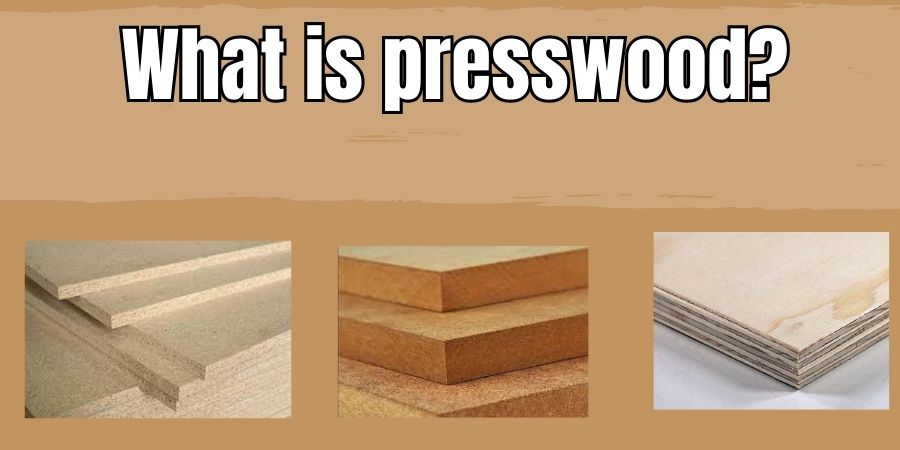“Presswood” is a type ofengineered wood that’s made by compressing various materials, such as wood particles, fibers, or chips, together using heat and pressure. It’s also sometimes called “particleboard” (although they’re not exactly the same thing).
Presswood is known for being versatile and durable, and it can be used in a wide range of applications, from furniture-making to building construction to packaging materials. It’s a budget-friendly option that’s popular with DIYers and professionals alike.
Commonly used in construction, furniture making, and interior design, since it’s a more affordable and versatile alternative to solid wood. Plus, it’s easier to work with than some other types of engineered wood, since it doesn’t have as much texture or grain pattern.
Of course, like any material, presswood does have its pros and cons.
For example, it can be more prone to swelling and warping when exposed to moisture than some other types of engineered wood, like plywood.
But overall, it’s a great option for a wide range of projects, whether you’re building a new piece of furniture or working on a home renovation.
Table of Contents
Particleboard vs. Presswood: What’s the Difference?
If you’re looking for wood-based products, you might have come across the terms “particleboard” and “presswood.” Although some people use these terms interchangeably, they’re actually two different types of engineered wood. Here’s the breakdown:
Particleboard is made from small wood particles that are bonded together with resin and then compressed. It’s a budget-friendly option, but it’s also more prone to swelling and warping when exposed to moisture.
Presswood, on the other hand, can be made from a variety of materials, including wood particles, fibers, or chips. The process involves compressing the materials together using heat and pressure, resulting in a more stable and durable product.
Plywood vs. Presswood: What are the Differences?
Another popular type of engineered wood is plywood. Like presswood, plywood is made by compressing layers of wood together. However, plywood is made by layering thin sheets of wood together with the grain alternating in each layer. Resulting in a stronger and more durable product than presswood.
Plywood is often used in construction applications, such as sheathing and subflooring, as well as furniture and cabinetry making.
Presswood, on the other hand, is more versatile and can be used in a range of applications, from building construction to packaging materials. It’s also often used in furniture and interior design due to its aesthetic appeal.
Oriented Strand Board (OSB) vs. Presswood: What Sets Them Apart?
OSB is another type of engineered wood that’s similar to presswood. However, instead of small particles, OSB is made from larger, oriented strands of wood that are arranged in layers and then compressed and glued together.
Resulting in a strong and durable product that’s often used in construction applications like sheathing and subflooring.
What are some types of presswood?
- Particleboard
- Medium-density fiberboard (MDF)
- Hardboard
- Fiberboard
- Masonite board
There are many other variations and brand names for presswood products, but these are some of the most common types you might come across.
FAQ section:
Q: Is presswood environmentally friendly?
A: Presswood can be a more environmentally friendly option than some other types of wood, since it’s often made from recycled or reclaimed materials. However, it’s important to make sure that the manufacturer you’re buying from uses sustainable and responsible sourcing practices.
Q: Can presswood be used outdoors?
A: Presswood is not generally recommended for outdoor use, as it can be more prone to swelling and warping when exposed to moisture. If you need a wood product for outdoor use, it’s usually better to use a more weather-resistant material, like treated lumber or composite decking.
Q: How is presswood made?
A: Presswood is made by taking wood fibers, chips, or particles and compressing them together using heat and pressure. The resulting material can be cut and shaped into a wide variety of sizes and shapes, making it a versatile option for many different applications.
Q: How do I know if presswood is the right choice for my project?
A: The best way to determine if presswood is the right choice for your project is to talk to a professional or do some research on the specific type of presswood you’re considering. Different types of presswood have different properties and uses, so it’s important to make sure you’re using the right material for your specific needs.





